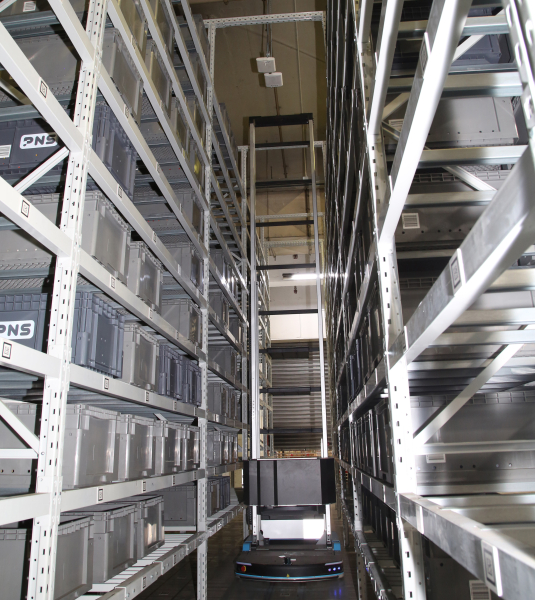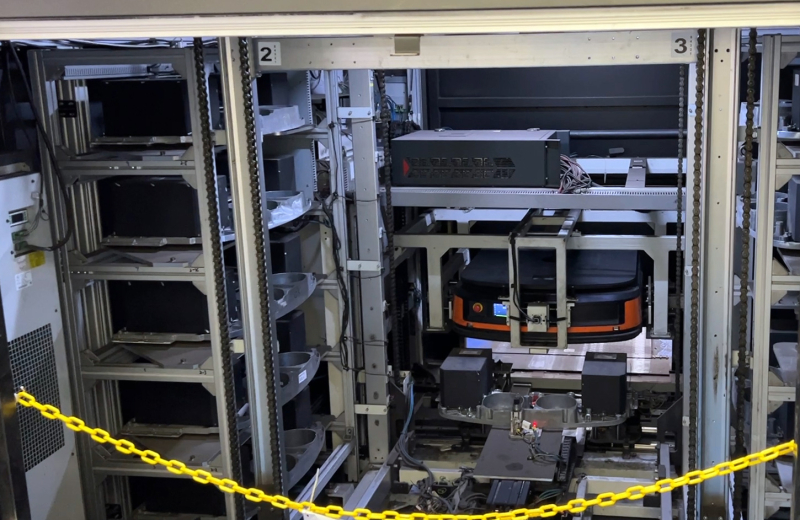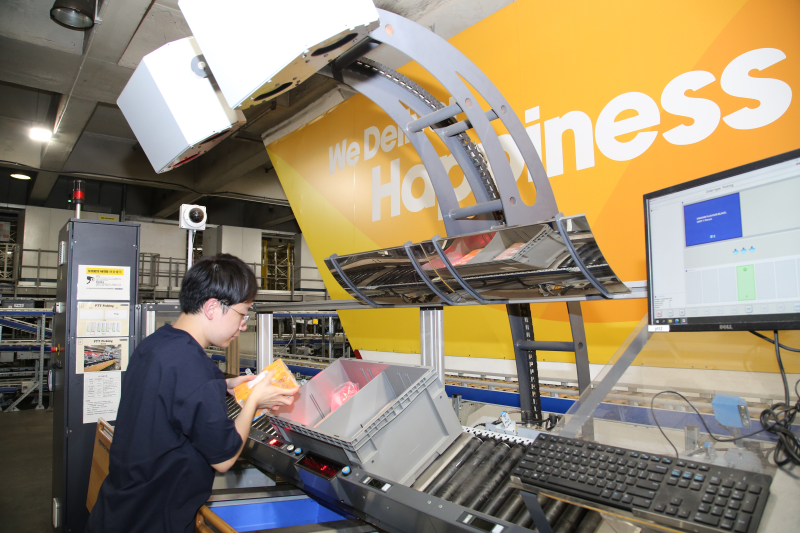Human ♡ Machine: Robots in the Fulfilment Centre
Much has been made of artificial intelligence (AI) lately regarding what language models can do, processing data in server farms and connecting to people through phones and laptops. But in the world of physical goods retail logistics, robots are guided by AI to do the heavy lifting that turns AI potential into reality.
AS Watson has made the most of the latest technology to bring humans and machines together. Working in a traditional fulfilment centre is very, very physical, with people running around, hauling, lifting, sorting and packing. In modern facilities, robots take out a lot of the heavy lifting and repetitive actions that would be hard on less physically capable workers.
In modern facilities, robots take out a lot of the heavy lifting and repetitive actions.
We want more; robots can make it happen
Online business has made us impatient shoppers. Next-day or same-day delivery is the new norm – not a luxury. Scaling up the capability to deliver more goods faster doesn’t just mean having more delivery people hanging around, waiting for an order. More inventory requires a bigger fulfilment centre, which means more processing, more people, and more paperwork. The potential for error rises exponentially, demanding fundamental change.
Just adding labour is not the answer. Tech is the answer.
AS Watson has ramped up its signature O+O (Offline plus Online) operations, not only by connecting with customers where they are and serving them how they want to be served. They have also built up the hidden back end through a massive investment in technology that benefits staff and customers alike.
PARKnSHOP and Watsons Hong Kong have used advanced technology to transform their fulfilment centres and triple the facilities’ throughput capacity. Not only is more flowing through but it is doing so more accurately as the technology checks, checks and checks again at every step of the process.
While fresh fruit and vegetable picking still uses advanced voice-picking technology (see Sphere #48, pages 11–12), more standard goods now flow through an advanced automation process.
PARKnSHOP and Watsons Hong Kong have used advanced technology to transform their fulfilment centres and triple the facilities’ throughput capacity.
The goods flow in...
Goods arrive at the fulfilment centre and are unpacked by workers who can deal with irregular-sized packages that come from all manner of suppliers.
“Totes” is the industry name for the special boxes used by AI-guided robots to move inventory. Think of the trays at security in the most advanced airports where they have to be the right shape to roll, stack and get moved back to the front of the line.
Fulfilment centre staff put the inventory into grey totes and tag the tote with a barcode. It goes on conveyor belts or rollers that direct and redirect it, scanning it along its route until it arrives in the storage area. The conveyor is a type of robot that sees and moves the boxes, even though it doesn’t look like the traditional image of a robot.
Then the tall boys take over. Imagine a ladder with shelves on it. A robotic device moves up and down the ladder and grabs the grey tote to put it on a shelf. This can happen while the tall boy is already moving to get another tote or heading for the storage racks. It can pick totes off the shelves and put them on the racks for storage. The tall boys are controlled by a sophisticated AI framework which monitors and guides their behaviour.

...and the goods flow out
When a product out of the grey tote is needed for an order, the tall boy gets the right tote and brings it back to the conveyor robot. There are hundreds of these machines all gliding and stacking in a tight space. They can also do it in the dark and at ambient temperature, saving energy that isn’t needed for visibility and air conditioning.
The robots also know when they need to be recharged and the system predicts and adapts for their downtime while they head to a station. But that time is short: three minutes for a battery swap in the new robots vs a 90-minute charge just a couple of years ago.

Once the inventory tote is on the roller, it heads back to the people zone where a human packer assembles items to go into a blue tote (box) for delivery to a customer. Grey totes on top, blue (for customer orders) below, as the packer scans and adds them. If a packer has two blue totes in front of them, a display tells them how much of each item from the grey tote goes in each box, showing an arrow (left or right) and a number.
The robot sensors know what product goes where. They also know what the whole package should weigh and will raise an alarm if a container is off target. The robots also check whether the height of the goods in the customer order tote is the right height or not.
The robots can encounter “traffic jams” if some elements move faster than others. The algorithms take the entirety of operations into account as they move totes around. They can even track a packer’s personal average speed to know to whom they should send a specific order, in the form of a blue tote, to balance the flow of the entire operation.
Help the people, help the planet
The whole process is much less physically and mentally demanding on packers. Fulfilment centre workers have left behind the onerous lifting and the driving of heavy equipment. If they are more prone to error, the automated system can flag their performance to help them improve their skills through extra training.

Some boxes are packed as is, while others will go to another packer who will put them into a smaller container with protective material. AS Watson’s commitment to sustainability means that they recycle packaging boxes from suppliers. In-house machinery breaks down cardboard into internal protective packaging (honeycomb paper) instead of using plastic bubble wrap. After a final weight check, the order is good to go!
The massive investment is worth it and is going to be expanded. The above only describes phase 1. Phase 2 will see the AI-powered robotic help expand dramatically to drive further productivity gains. Those gains will further the O+O capabilities that keep customers coming back and make life easier for workers in the fulfilment centres. That’s the kind of robot everyone can appreciate.